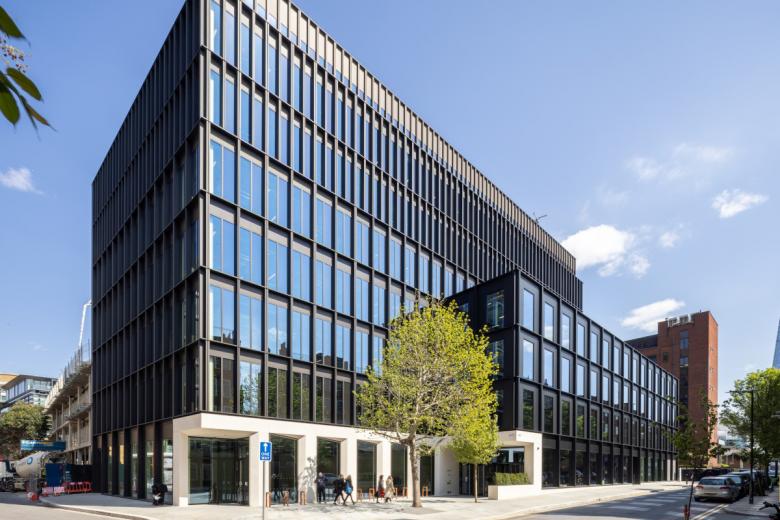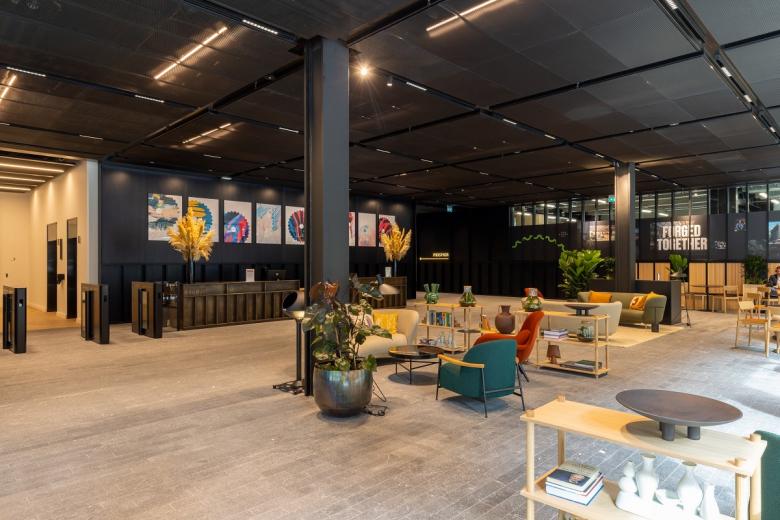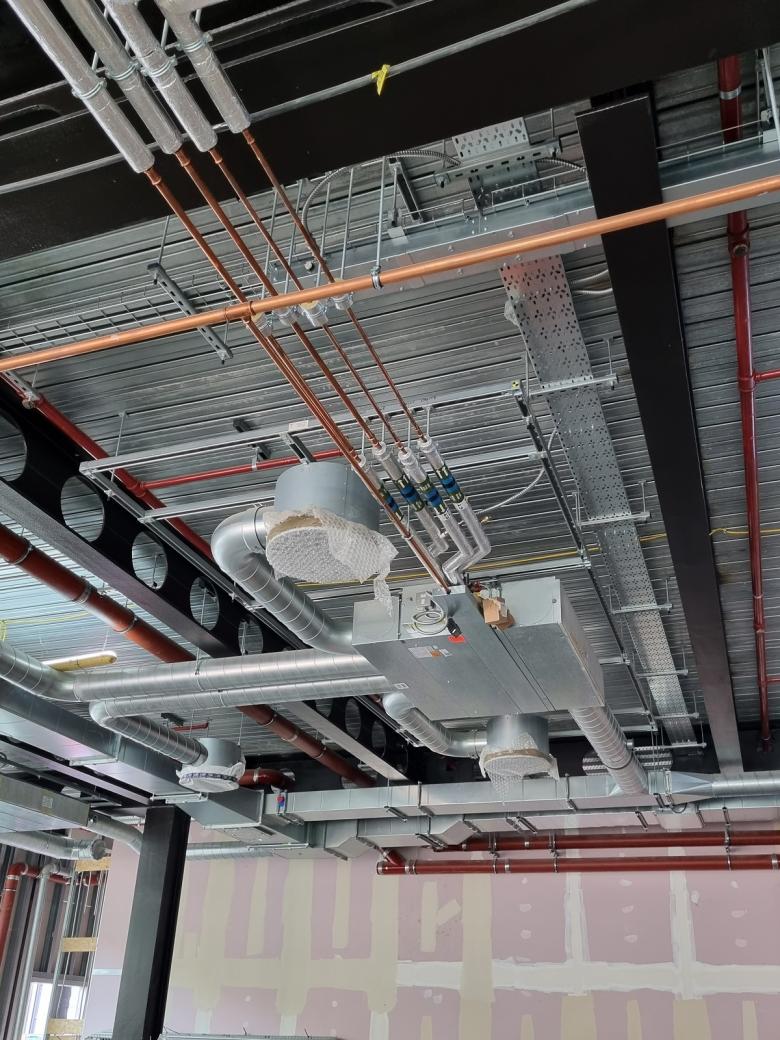The Forge at 105 Sumner Street in London
London, Great Britain
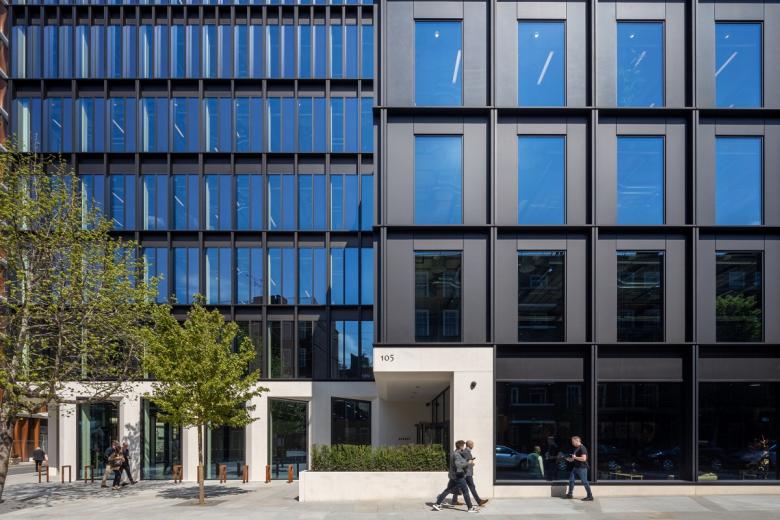
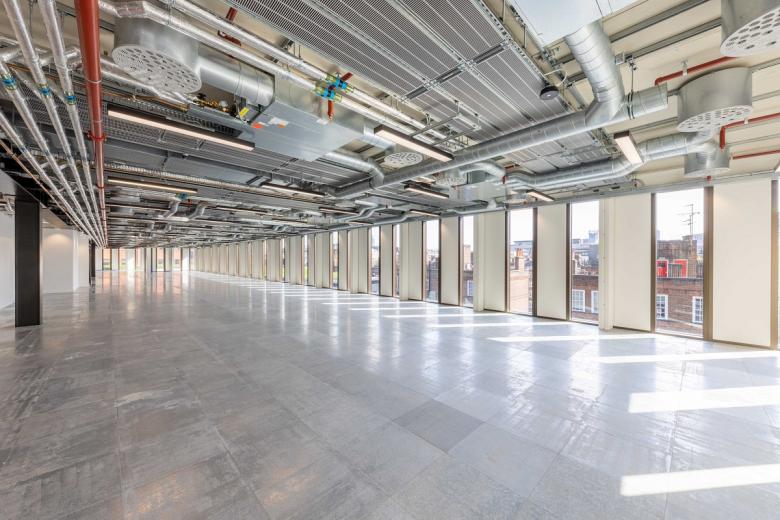
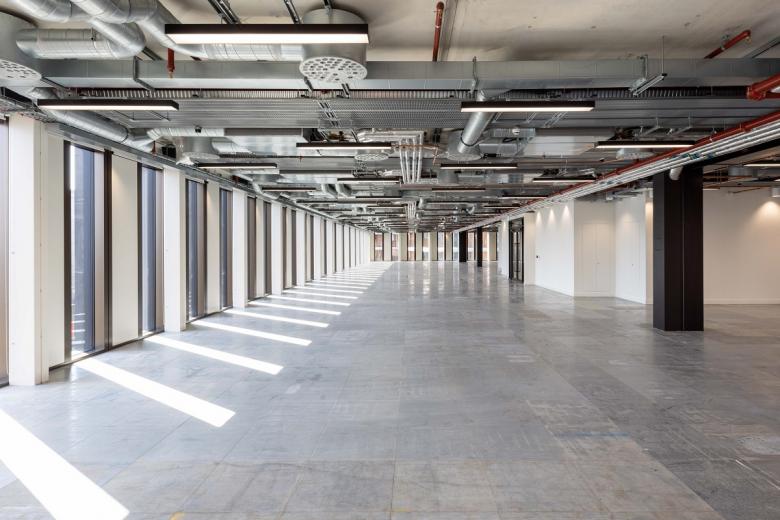
- Manufacturers
- Kiefer Klimatechnik GmbH
- Location
- 105 Sumner St, London, Great Britain
- Year
- 2023
- Client
- Land Securities London
- Team
- Architekt Bryden Wood London
First net zero carbon building using platform-led approach
Landsec, one of the leading real estate and investment companies in the UK, opened the first office development in the country to be designed, manufactured, constructed and operated with significantly reduced embodied carbon last year. The Forge at 105 Sumner Street in Southwark was built using a platform approach to design for manufacture and assembly (P-DfMA) and showcases pioneering ways in which the construction industry can address their carbon footprint. Kiefer is on board with its highly inductive ceiling air diffusers and was involved at all stages of the construction process, from planning right through to completion.
How can the construction industry get greener? For one possible answer to this question, we look to London, where a landmark development has emerged that will set a benchmark for others to follow. Located close to the Tate Modern in the heart of Bankside is 105 Sumner Street, home to The Forge, a ground-breaking development created by property developer Landsec.
The Forge demonstrates that low carbon construction is not only possible, but also offers a meaningful way of addressing the development industry’s scope 3 emissions – those that are a consequence of a company’s actions, but which occur at sources that the company does not own or control. In new construction, this includes supply-chain emissions arising from the manufacturing of products, the transportation of materials and the assembly of a building. A net zero carbon building actively contributes to the significant reduction of scope 3 emissions. The Forge is the UK’s first commercial building to be both constructed and operated in line with the UK Green Building Council’s (UKGBC) net zero carbon buildings framework and associated energy performance targets.
This is achieved through a platform approach to design for manufacture and assembly (P-DfMA), which uses fewer natural resources, creates less waste, saves time and cuts costs. The concept was originally developed by architect and offsite manufacturing specialist Bryden Wood, who partnered with Landsec on the design and construction of The Forge. As Neil Pennell, Head of Design Innovation and Property Solutions at Landsec explains: “We were able to reduce the embodied carbon by circa 39% compared with the expected level in the traditionally designed and constructed equivalent building. Around half of this reduction has been achieved by the savings made in the P-DfMA structural frame,” using less steel and concrete and increasing levels of cement replacement materials all made possible by the innovative design approach.
Faster, better, safer, greener, and more cost-effective
Compared to conventional construction techniques, the P-DfMA approach aims to produce faster, better, safer, greener and more cost-effective results. The process is like the working methods used in the manufacturing industry, for example in car production, where the same underlying platform is used again and again. Platforms are a set of standardised components that are assembled using a consistent and systemised methodology with the idea that for construction this solution can be used repeatably for a range of similar buildings. At The Forge, the P-DfMA approach was focussed on the super-structure, services, and unitised cladding components. However, it is important for architects and developers to understand that this is not about creating identikit buildings that all look the same – the platform approach still retains the architect’s creative freedom.
In total, the 139,000 sq ft development consists of two nine-floor buildings. The hybrid steel and concrete structure offers plenty of column-free space on each floor in line with today’s expectations of a quality office product. The primary steel beams are designed to achieve a 9m x 9m column grid with uniform cut-outs in the web for services penetrations. An in-situ super slim 140 mm deep concrete slab formed by a kit of parts set of temporary works completes the structure supported by a series of integral secondary concrete beams at 3.0m centres.
The steel and concrete hybrid frame in particular allows the platform approach to shine: despite the use of in-situ concrete to form the slab, the floor cycle build time is short as work can continue while the concrete is still reaching strength. This is made possible by the use of diagonal props that transfer the loads to the primary steel structure rather than vertically into the previously cast slab as would normally be the case. Because the slower curing time matters less and the cement content can therefore be lowered, it is also possible to reduce the embodied carbon level in concrete production.
The system seeks to automate the construction process and minimise the reliance on using cranes. Wherever possible materials are packed in stillages which can be transferred to the floors using large material hoists and components lifted into position using versatile and highly manoeuvrable forklift units called reach stackers. This reduces manual handling improves productivity and saves time and costs.
As a result of the improved efficiencies and reduced waste, the modified processes have a positive influence on the overall construction of the building. After completion, Gold Standard carbon offsets are purchased to provide the negative balance required to take the project to net zero carbon. Furthermore, the Forge will not be supplied with any energy from fossil fuels, but rather from a combination of renewable electrical supplies and its own photovoltaic panels.
Key specialists and service providers brought in early
Even before construction began, participating suppliers and key specialists, such as Kiefer, were brought in to contribute their expertise to the design, in direct collaboration with Landsec and Bryden Wood. This allowed the services installation to be optimised and fully integrated with the super-structure ensuring the service routes needed to take up as little space as possible and incorporated a high level of standardisation. The design envisaged an exposed high-level services installation without suspended ceilings. To do justice to these project requirements, Kiefer conducted preliminary simulations at its in-house laboratory. A typical office room was equipped with the INDUDRALL KR 500 ceiling air diffuser to investigate air flow behaviour for the three load scenarios of full cooling, partial load cooling and full heating. Through these tests, Kiefer was able to show that an ideal ambient air flow was achieved in accordance with the project specification, and that all thermal comfort conditions were met. The laboratory tests also showed that the planned lighting and acoustic panels would not affect the air flow. A number of design refinements and the optimised arrangement of the swirl diffusers made possible by the early input allowed for higher induction and good air jet dispersion to be achieved. This would significantly improve thermal comfort for users.
Delivery and pre-assembly in a “factory”
For this project, Kiefer did not deliver directly to the construction site as usual, but to an assembly factory in advance. There, all the services components were pre-assembled on frames, which were then stacked in stillages so that several modules could be transported at the same time. As a result, one of the modules could contain INDUDRALL ceiling air diffusers, connected onto the associated fan coil unit and supply air ducts. On site, the soffit fixings had been cast into the slab ahead of time, so all that remained was to bolt the modules to the inserts already in the slab. To make the installation even more straightforward, Kiefer did not deliver standard boxes in this case, but customised versions with different socket diameters and lengths, as well as special fixing tabs.
Operational energy use is minimised through careful design and the use of heat pump technology to meet all the heating and cooling needs of the two buildings Bronze and Phosphor. The all-electric buildings are predicted to achieve a NABERS UK 5-star rating and Landsec have committed to supply the building with REGO backed renewable electricity.
Outlook: building for net zero
Wherever construction takes place, emissions are inevitable. However, building projects such as The Forge show that climate-responsible construction is already possible today. The aim is to minimise emissions and conserve resources – and the easiest way to do this is during operation. With renewable energy sources, emissions for ventilation, heating, water, and electrical appliances can be reduced. However, there is room for improvement on the emissions front when it comes to the extraction of resources, manufacturing of products, transportation of materials and assembly of a building. If construction activities are viewed holistically in this way, there is no doubt that net zero is the most effective means of combating climate change.
Statement by Neil Pennell, Head of Design Innovation and Property Solutions at Landsec, London:
“Following an extensive evaluation of alternative air distribution products, we selected the Kiefer INDUDRALL diffuser for our modular air conditioning solution at The Forge. To fit with our vision of a flexible and adaptable system which could be used on multiple projects we needed a diffuser that could deal with a range of different load conditions in both internal and perimeter zone locations and perform equally well with or without a ceiling whilst providing optimal comfort conditions in the occupied space. The INDUDRALL diffuser was subjected to rigorous testing and met all the requirements under both summer and winter conditions making it the ideal choice to use as part of the innovative P-DfMA (platform - design for manufacture and assembly) ‘Kit of Parts’ system deployed on the project.”
Good to know:
The terms “carbon neutral” and “net zero carbon” sound similar but differ in the fine detail. In both cases, companies endeavour to reduce and offset their carbon footprint. However, carbon neutral usually refers retrospectively to offsetting the total amount of carbon emissions. By contrast, net zero carbon means aiming to minimise emissions right from the start of construction, all the way through to operation – meaning that significantly fewer emissions need to be removed or offset later.
Related Projects
Magazine
-
Winners of the 5th Simon Architecture Prize
1 week ago
-
2024, The Year in …
2 weeks ago
-
Raising the (White) Bar
2 weeks ago
-
Architects Building Laws
2 weeks ago
